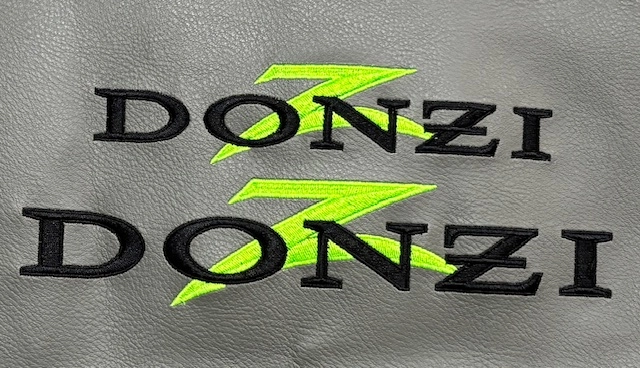Customized Embroidery for All Your Needs - From School Uniforms to Sports Teams
Customized Embroidery for All Your Needs - From School Uniforms to Sports Teams
Blog Article
The Art of Custom-made Needlework: Unlocking the Keys to Creating Unique and Memorable Styles
The tricks to creating personalized embroidery styles that astound the eye and leave a long lasting perception lie in a fragile equilibrium of technique, creativity, and attention to detail. As we dive right into the world of custom embroidery, we discover the nuanced interaction in between thread option, stitch complexity, and style customization that boosts a plain garment to a work of art.
Selecting the Right Embroidery Threads
When choosing needlework strings, what crucial variables should you think about to ensure the best results for your customized layouts? The choice of needlework string is critical in establishing the last outcome of your embroidered style.
Moreover, the weight or thickness of the thread plays a considerable duty in the look of the needlework. Thicker strings can add measurement and appearance to your layout, while finer strings are suitable for elaborate information and small message. In addition, taking into consideration the shade fastness and washability of the string is crucial to ensure that your personalized layouts preserve their quality and vibrancy with time. By thoroughly assessing these factors and picking high-grade threads that fulfill your certain requirements, you can enhance the aesthetic allure and long life of your stitched developments.
Checking Out Different Stitch Strategies
To explore the world of 'Exploring Various Stitch Strategies', one should realize the ins and outs and subtleties that each sewing approach brings to the art of needlework. Different stitch methods not just include visual passion but additionally contribute to the overall appearance and measurement of the design. One prominent stitch technique is the satin stitch, which entails closely jam-packed parallel stitches to produce a smooth and shiny surface, perfect for completing forms and producing strong lays out.
On the other hand, the backstitch is a flexible method typically utilized for detailing and including fine details. It includes stitching backward to create a solid line of embroidery. Furthermore, the French knot stitch adds a responsive component to designs, ideal for producing textured accents like blossom facilities or decorative touches.
Exploring different stitch techniques allows embroiderers to have fun with light, darkness, and deepness within their styles, boosting the aesthetic allure and creative top quality of their embroidery tasks. By grasping various stitching approaches, one can unlock unlimited opportunities for developing one-of-a-kind and remarkable personalized embroidery items.
Incorporating Personalized Layout Elements
Having checked out the complexities of various stitch techniques such as the satin stitch, backstitch, and French knot, the focus now moves in the direction of integrating tailored layout components in custom-made needlework tasks. Personalized design components play an important role in making embroidery jobs really distinct and memorable. One way to include customization is by including initials, names, or substantial days to the design. This not just includes a customized touch but additionally improves the emotional value of the needlework item.
An additional way to incorporate tailored style components is by including signs or motifs that dry cleaners alterations near me hold special significance to the recipient or reflect their rate of interests and personality. For instance, incorporating a favorite flower, pet, or hobby-related symbol can make the needlework design much more meaningful and personalized. In addition, selecting colors that reverberate with the recipient or straighten with the intended style can better enhance the personalization of the embroidery job.
Understanding the Art of Color Sychronisation
One trick aspect of color coordination is comprehending shade theory. This consists of knowing exactly how various shades communicate with each various other, the feelings they share, and how they can be incorporated to create aesthetically enticing designs. By using shade theory concepts, embroiderers can create harmonious shade palettes important site that improve the general appearance of the design.
Furthermore, taking note of contrast is vital in shade sychronisation. Utilizing contrasting colors can assist particular aspects of the design pop, improve readability, and produce an aesthetically vibrant needlework piece. By understanding the art of shade control, embroiderers can boost their designs and create remarkable pieces that resonate with customers and viewers alike.
Enhancing Texture With Advanced Embroidery Stitches

Bullion knots, on the various other hand, can be made use of to develop twisted, ropelike aspects that add a glamorous feeling to the embroidery. Trying out with these innovative needlework stitches enables you to push the borders of typical embroidery and produce really unique and aesthetically enticing structures in your designs.
Conclusion
In final thought, the art of customized embroidery entails a combination of choosing the best threads, exploring different stitch techniques, including tailored style elements, understanding color sychronisation, and enhancing appearance with sophisticated stitches. By understanding and applying these crucial elements, embroiderers can produce distinct and remarkable styles that display their imagination and skill. Embroidery enthusiasts can open the secrets to developing stunning and bespoke items that attract attention and leave a long-term perception.
Report this page